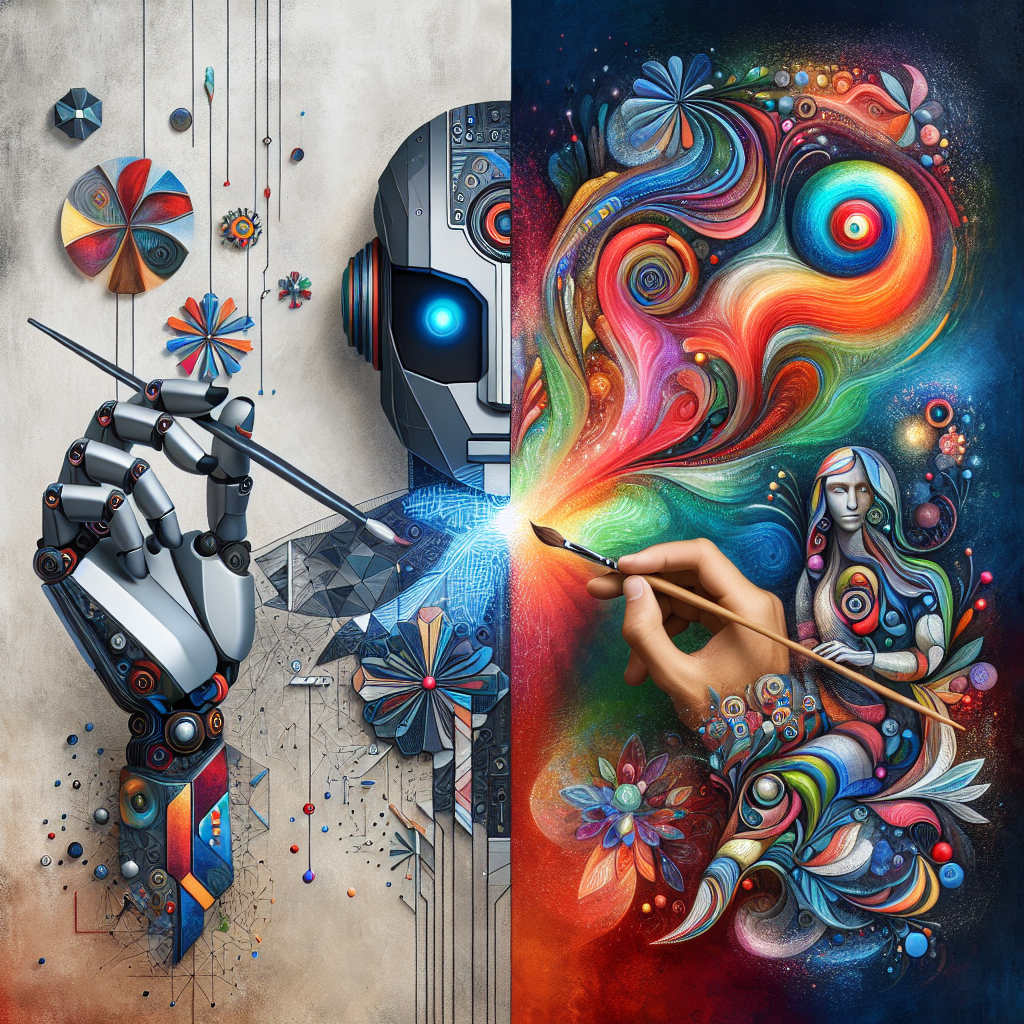AI vs Human Creativity: Who Wins?
Artificial Intelligence (AI) has made significant advancements in recent years, leading to concerns about its potential to surpass human creativity. While AI can perform tasks traditionally associated with human creativity, such as generating music, art, and writing, the question remains: can AI truly compete with the creative capabilities of humans? In this article, we will explore the capabilities of AI in comparison to human creativity, and discuss the potential implications of this ongoing debate.
AI Creativity: The Rise of Machine Learning
AI has made significant strides in mimicking human creativity through machine learning algorithms. These algorithms are trained on vast amounts of data to recognize patterns and generate new content. For example, AI can generate realistic images, compose music, and even write poetry that can be indistinguishable from human creations.
One of the key advantages of AI in creative tasks is its ability to process and analyze huge amounts of data quickly and efficiently. This allows AI to generate creative outputs at a scale and speed that humans cannot match. Additionally, AI can learn and improve over time, refining its creative outputs based on feedback and new data.
AI has also been used to enhance the creative process for human artists and creators. Tools like Adobe’s Sensei use AI to assist in tasks such as image editing and design, enabling artists to focus on more complex and creative aspects of their work.
Human Creativity: The Power of Imagination
While AI has made impressive advancements in creative tasks, human creativity remains unique in its depth and complexity. Human creativity is driven by emotions, experiences, and the ability to think abstractly and critically. Humans have the capacity to draw inspiration from a wide range of sources, including personal experiences, cultural influences, and societal issues.
Human creativity is not just about generating new content, but also about expressing emotions, telling stories, and connecting with others on a deeper level. Creativity is an essential part of human identity and plays a crucial role in shaping our culture, society, and personal relationships.
One of the key strengths of human creativity is its ability to adapt, innovate, and think outside the box. Humans have the capacity to combine disparate ideas, experiment with new concepts, and push the boundaries of what is considered possible. Human creativity is not bound by rules or limitations, allowing for endless possibilities and potential for growth.
AI vs Human Creativity: A Complex Relationship
The debate over AI vs human creativity is complex and multifaceted. While AI has shown remarkable capabilities in creative tasks, there are still limitations to its ability to replicate the depth and complexity of human creativity. AI lacks the emotional intelligence, intuition, and empathy that are essential components of human creativity. AI also struggles with understanding context, nuance, and subtlety in creative works.
On the other hand, AI has the potential to complement human creativity by providing new tools, insights, and perspectives. AI can assist artists and creators in generating ideas, exploring new possibilities, and enhancing the creative process. By working in collaboration with AI, humans can leverage the strengths of both AI and human creativity to create innovative and impactful works.
The Future of Creativity: Collaboration or Competition?
As AI continues to advance, the future of creativity will likely involve a combination of collaboration and competition between AI and human creators. AI has the potential to revolutionize creative industries, enabling new forms of expression, collaboration, and distribution. However, the human touch and emotional depth of human creativity will always be valued and appreciated by audiences.
It is important for artists, creators, and technologists to embrace the potential of AI while also recognizing the unique strengths of human creativity. By combining the power of AI with the imagination, emotion, and intuition of human creativity, we can unlock new possibilities and push the boundaries of what is possible in the creative arts.
FAQs
Q: Can AI truly be creative?
A: AI can mimic human creativity by generating new content based on patterns in data. While AI can create impressive works of art, music, and writing, it lacks the emotional depth and intuition that are essential components of human creativity.
Q: Will AI replace human creativity?
A: While AI has the potential to automate certain creative tasks, human creativity remains unique in its ability to express emotions, tell stories, and connect with others on a deeper level. AI is more likely to complement human creativity rather than replace it entirely.
Q: How can AI enhance human creativity?
A: AI can assist human creators by providing tools, insights, and perspectives that can enhance the creative process. AI can help generate ideas, explore new possibilities, and streamline tasks, allowing human creators to focus on more complex and creative aspects of their work.
Q: What are the ethical implications of AI in creative industries?
A: The use of AI in creative industries raises ethical questions about ownership, authenticity, and the impact on human creativity. It is important for artists, creators, and technologists to consider these implications and ensure that AI is used responsibly and ethically in creative works.

